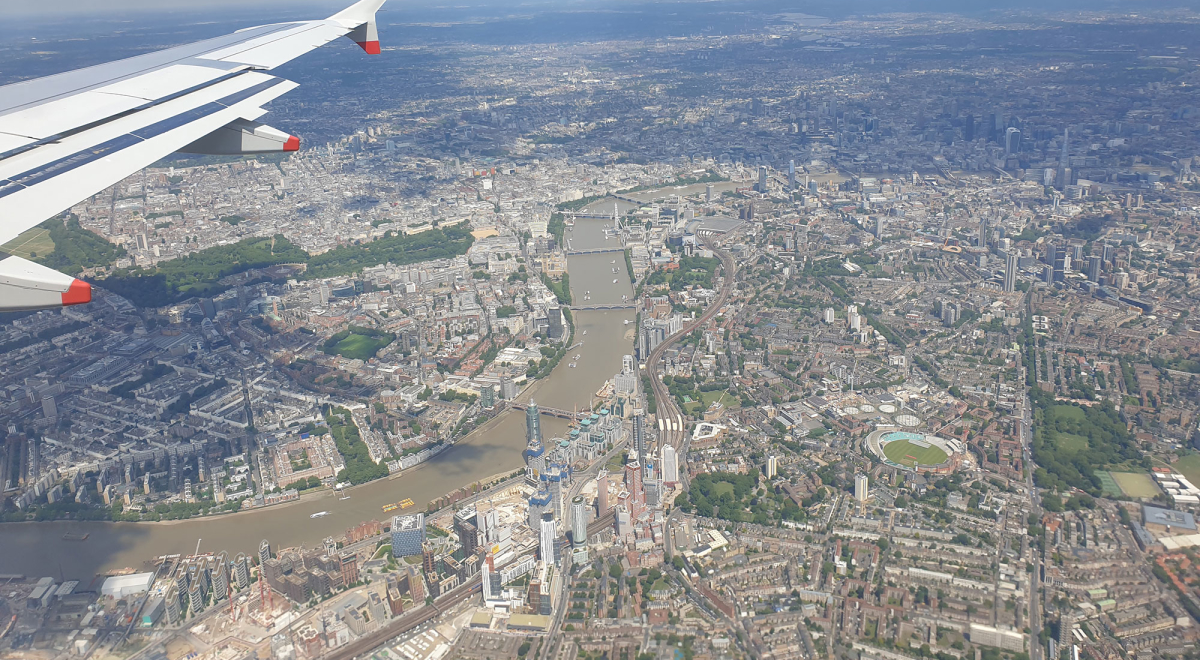5.5min read
Published 15 July 2020

UK Content & Social Lead
Like most, I had a jam-packed diary for 2020. House move, three weddings, two hen parties and trips to six different countries – to name a few. But then, COVID-19 happened, and I was resigned to the fact that, actually, none of that would be happening this year.
That is until Friday 3rd July, when the government announced 59 blissful travel corridors that would open up just a week later. This effectively listed a selection of countries and territories (largely in Europe) that were exempt from the FCO’s advice to ‘ban all but essential travel’. It also meant that, when visiting said countries, there would now be no need to self-quarantine for 14 days on my return to the UK. Freedom!
You didn’t need to tell me twice. Desperate to see how the pandemic had changed the landscape of air travel and holidays, I booked a flight to Germany for the first weekend that the world (or at least, some of it) reopened. Here’s how it went:
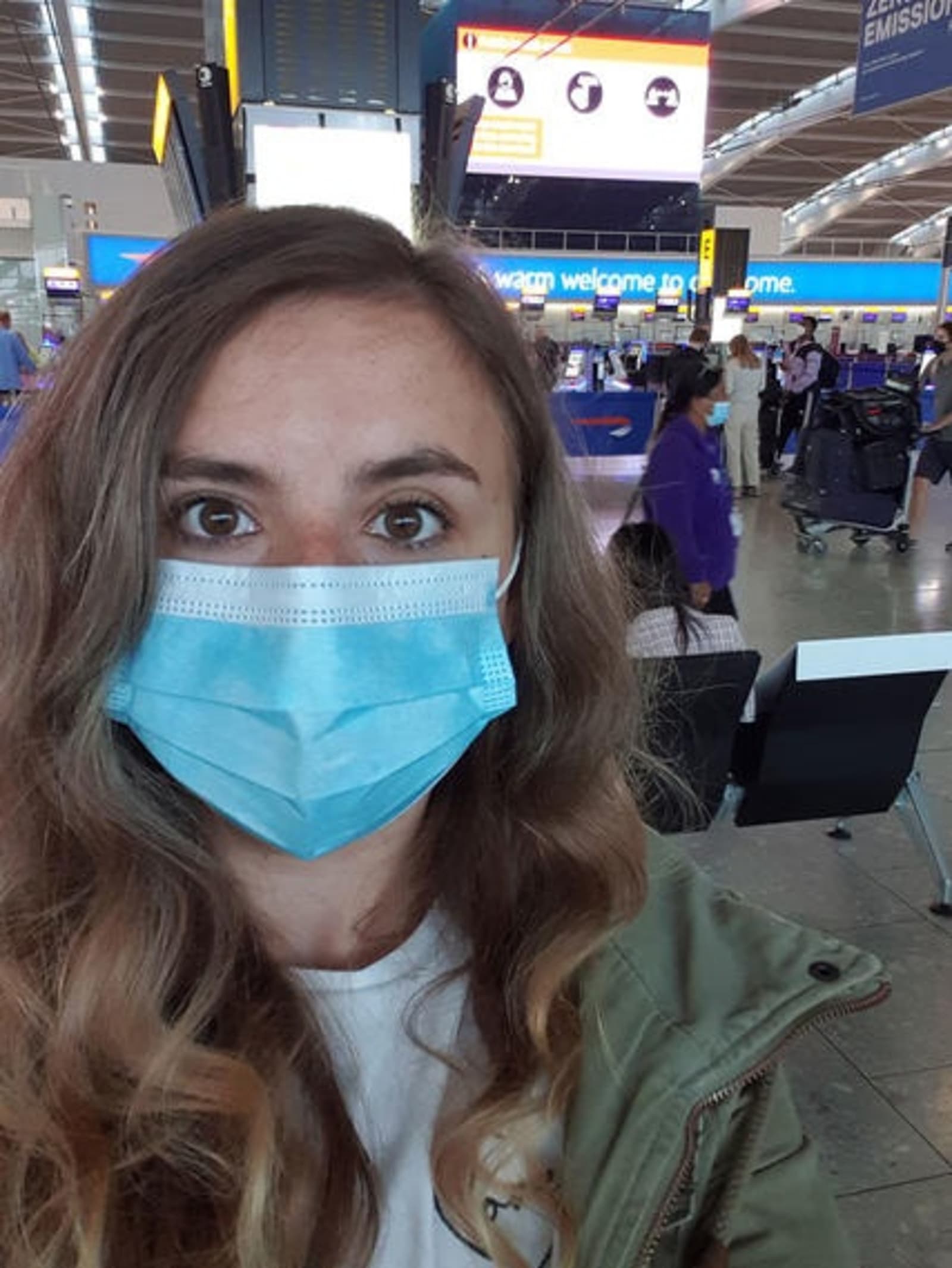


Me in a mask - (image: Alex Cronin)
Getting to the airport
My transfer to the airport was nothing out of the ordinary by pre-pandemic standards. But, with a coronavirus yard stick, I was not only leaving my county (something I’ve not done in 16 weeks), but I was also seeing someone NEW. I don’t know about the rest of you, but I can easily count the number of friends and family that I’ve seen in person since March. It’s 11, in case you were wondering. So, talking to a real-life 3D person – albeit a not-so-chatty Uber driver – was quite exciting. He and I both wore masks of course, something which is mandatory in all pick-ups.
It was a Friday morning, around 6am, and the roads (specifically the M25) were eerily quiet for nearing rush hour. Upon arrival at London Heathrow, we had no trouble finding a drop-off spot, and I was almost lulled into thinking the airport would be something of a ghost town…
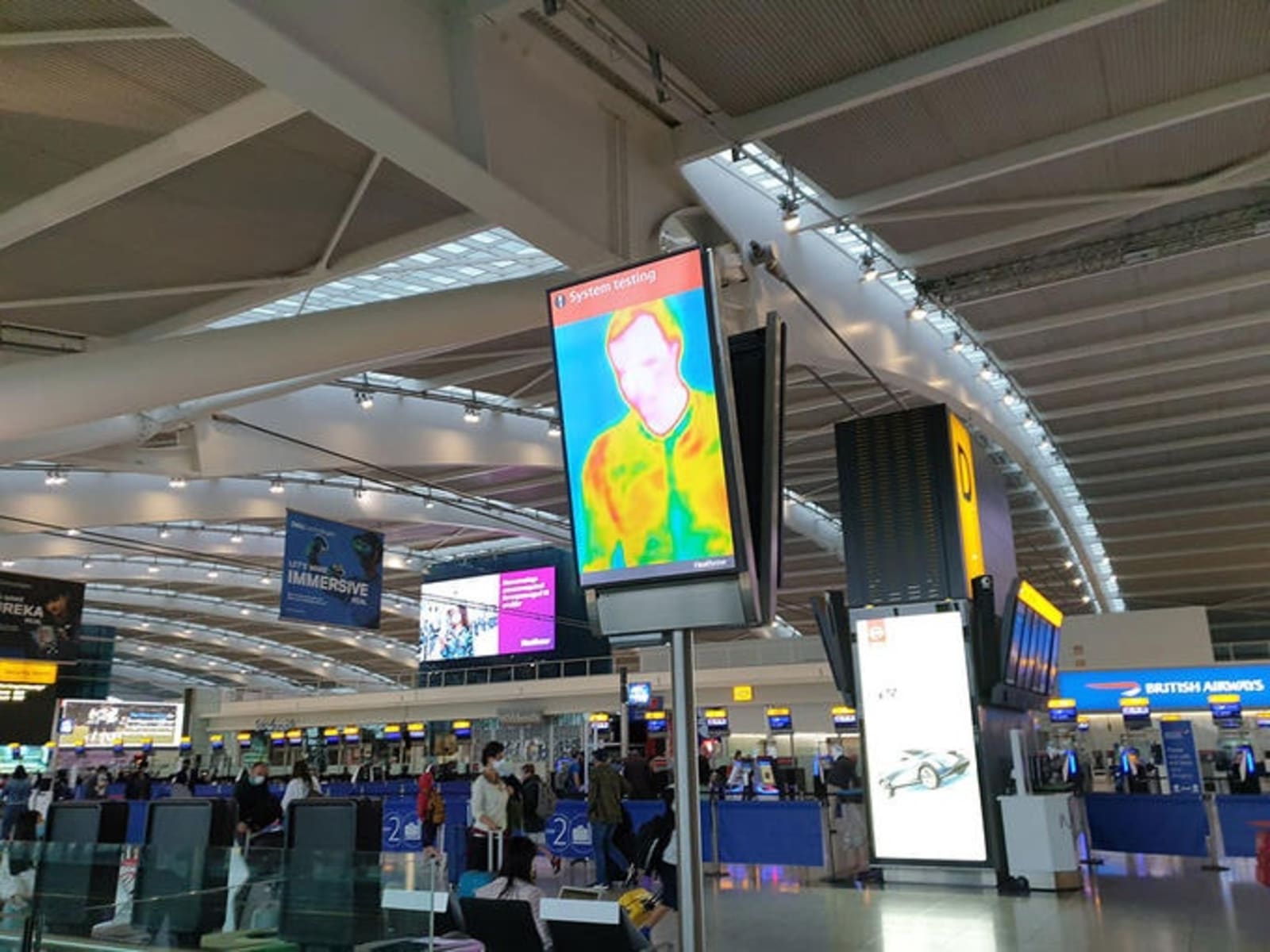


Temperature check trial at Heathrow - (image: Alex Cronin)
In the terminal
I was wrong about the ghost town thing. That’s not to say Heathrow was packed, but despite most airlines running reduced schedules, there were a fair few travellers who’d clearly had the same idea as I come 10th July. Families, business travellers, friends and couples alike were all filtering into British Airways’ Terminal 5 building and heading for the airline’s well-spaced self-service kiosks – perfect for checking in and tagging baggage at a recommended safe distance.
I was travelling hand luggage only and I’d checked-in online the day before – all to minimise any close contact with people. I needn’t have worried.
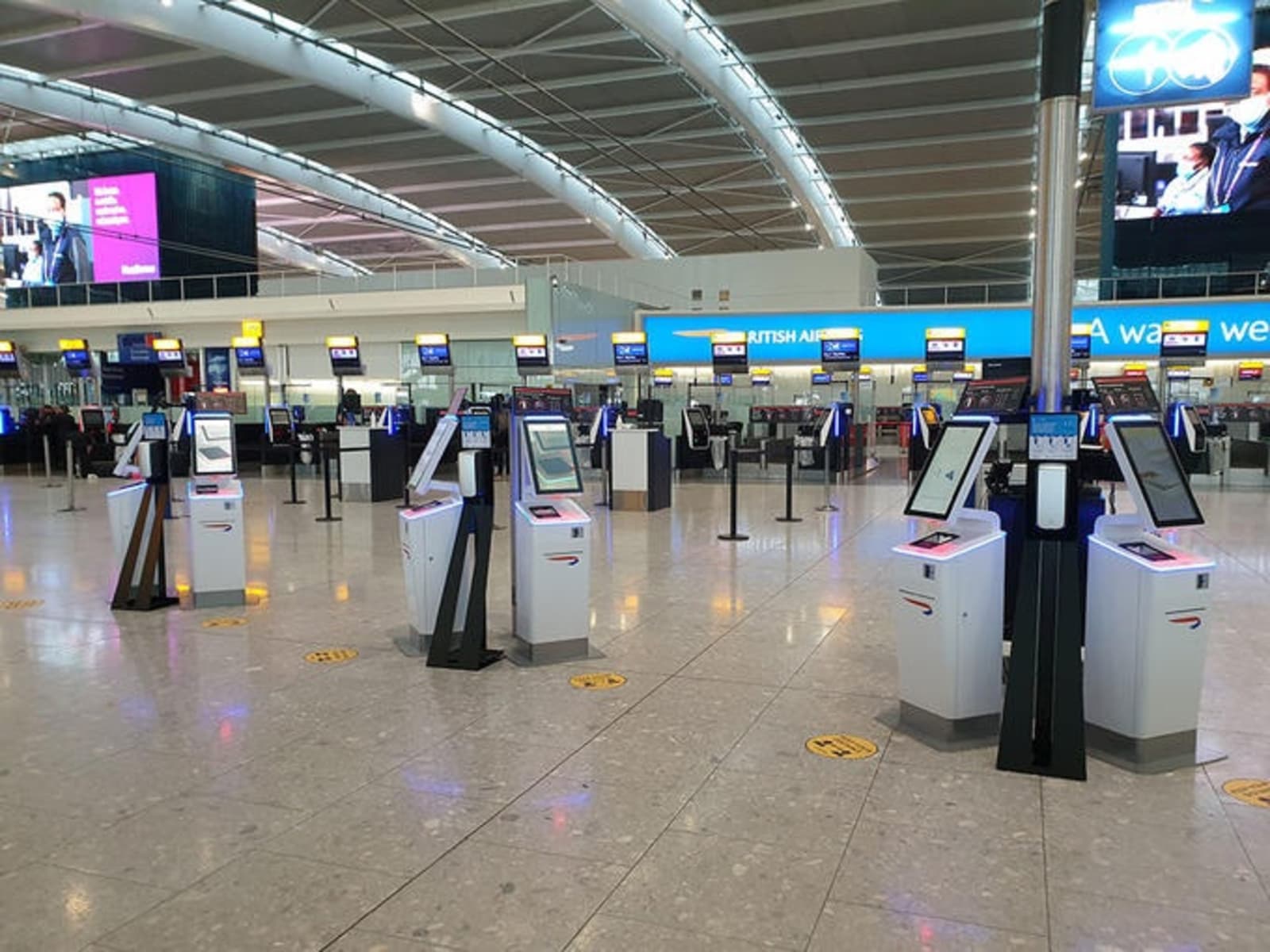


British Airways T5 self-service - (image: Alex Cronin)
Masks are mandatory inside the terminal, social distancing of 2m is heavily encouraged via the use of abundant signage, floor markers and blocked-off seating. Heathrow was even running a temperature check trial when I visited too, with cameras positioned at all entrances to see if anyone was running a fever. Sanitising stations were available at every touch point – in queues, at check-in-desks, bag drop, and at security – and there was definitely an increased presence of cleaning staff.
Best of all, the general feeling was one of positivity and care, something that had worried me pre-trip. I was under the misconception that people would be barging and hurrying their way through the airport, but, in reality, the vast majority of people were very considerate and aware of others around them. Even with shops and cafes in Departures open, not once did I feel like my personal space was being infringed on.
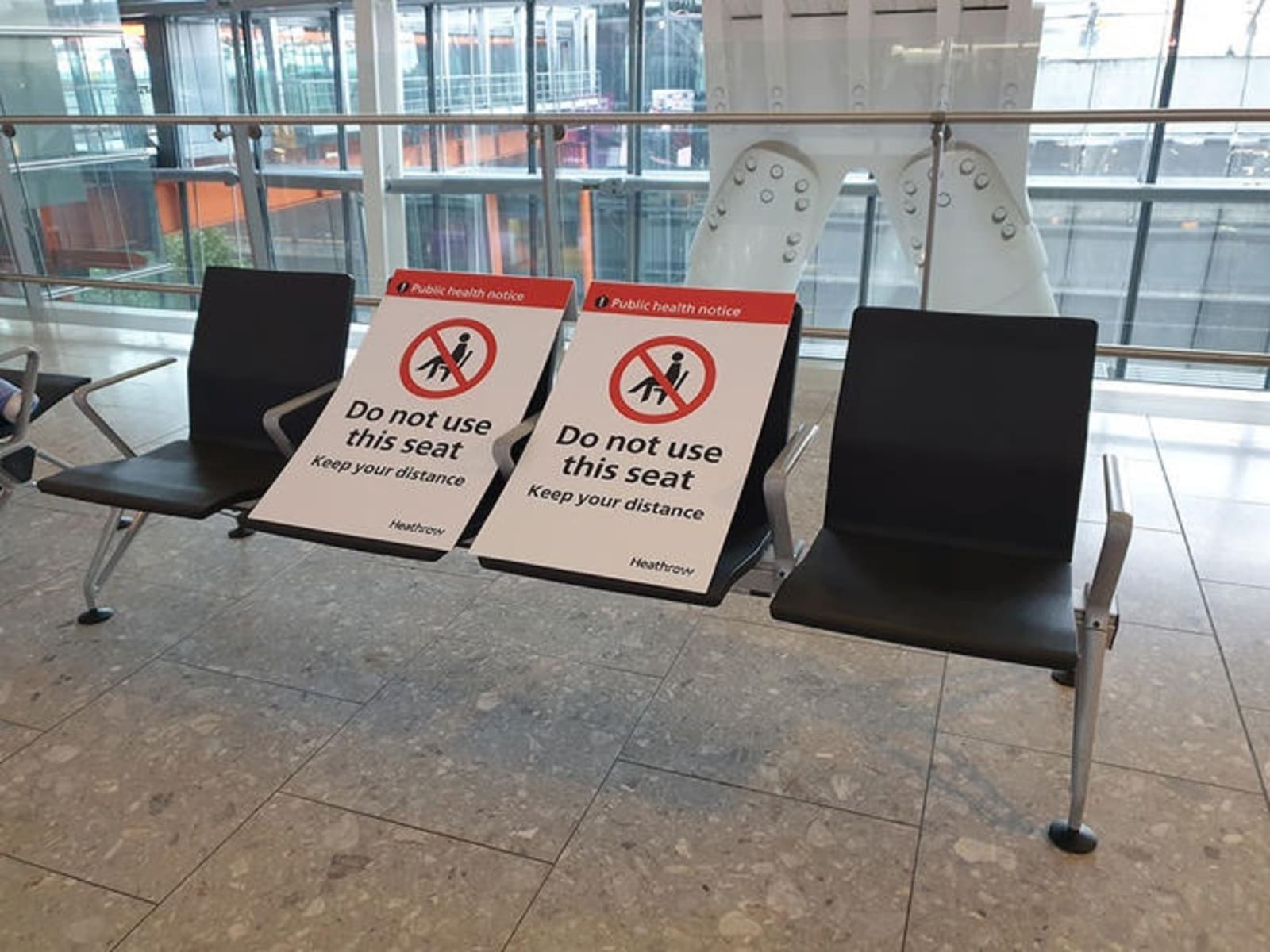


Spaced-out seating - (image: Alex Cronin)
In the British Airways lounge
If you’re feeling flush, or you’re travelling with work and the budget’s there, I would highly recommend upgrading to Business or First Class when you can – especially for the lounges. British Airways’ Club and First lounges at Heathrow Terminal 5 reopened at the start of July, and it’s clear the airline has been working hard to make everything COVID-safe. Indeed, the seating is more spaced out than it’s ever been (and it was already pretty well spaced before), there are sanitising stations at the lounge entrance and exit, as well as Perspex screening, and any buffet services have been removed and replaced with made-to-order dishes.
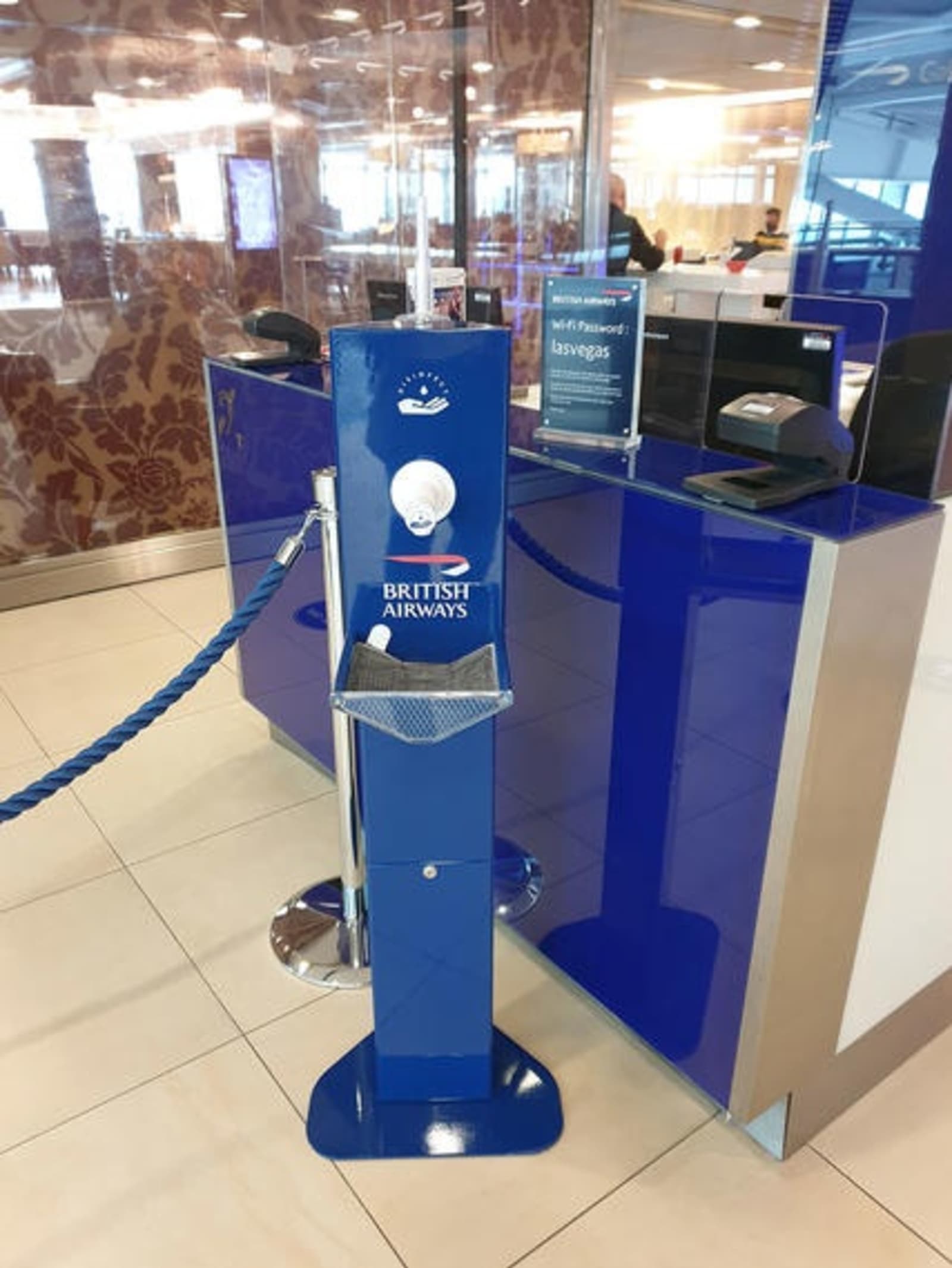


BA sanitising station outside Club Lounge - (image: Alex Cronin)
Indeed, the best thing about settling down in a plush chair overlooking the runway was the new food and drink system. Each table now has a QR code in the middle – you simply scan it with a reader on your phone and launch the BA app. Here you can order exactly what you want, direct to your table.
Boarding the plane
Like all airlines, British Airways is running a reduced service at the moment, with destinations and frequency set to increase over the coming months. As such, the flight I was on – London Heathrow to Berlin-Tegel – was fairly busy. That being said, everyone was socially distanced while sitting/standing by the gate, and boarding was done in reverse, from the back to the front. Usually you find that there’s always someone who ignores what groups are called, but it seemed as though everyone was being patient and following instructions.



BA's Personal Protection Pack - (image: Alex Cronin)
Before locating my seat, I, and the rest of the passengers, was given a Personal Protection Pack, including a sanitising wipe and a sachet of antibacterial gel. As part of BA’s new COVID-19 cleaning programme, all the planes are cleaned thoroughly between flights, and the HEPA filtration systems onboard filter air every 2-3 minutes, removing bacteria and viruses with 99.9% efficiency. That’s the same standard used in operating theatres! However, I’m an overcautious traveller, so as soon as I sat down I made use of the pack and wiped down my tray table, arm rests and seat belt – just for good measure. And, travelling with just a small bag, I was able to tuck my luggage under the seat in front of me, thus avoiding touching any overhead bins.
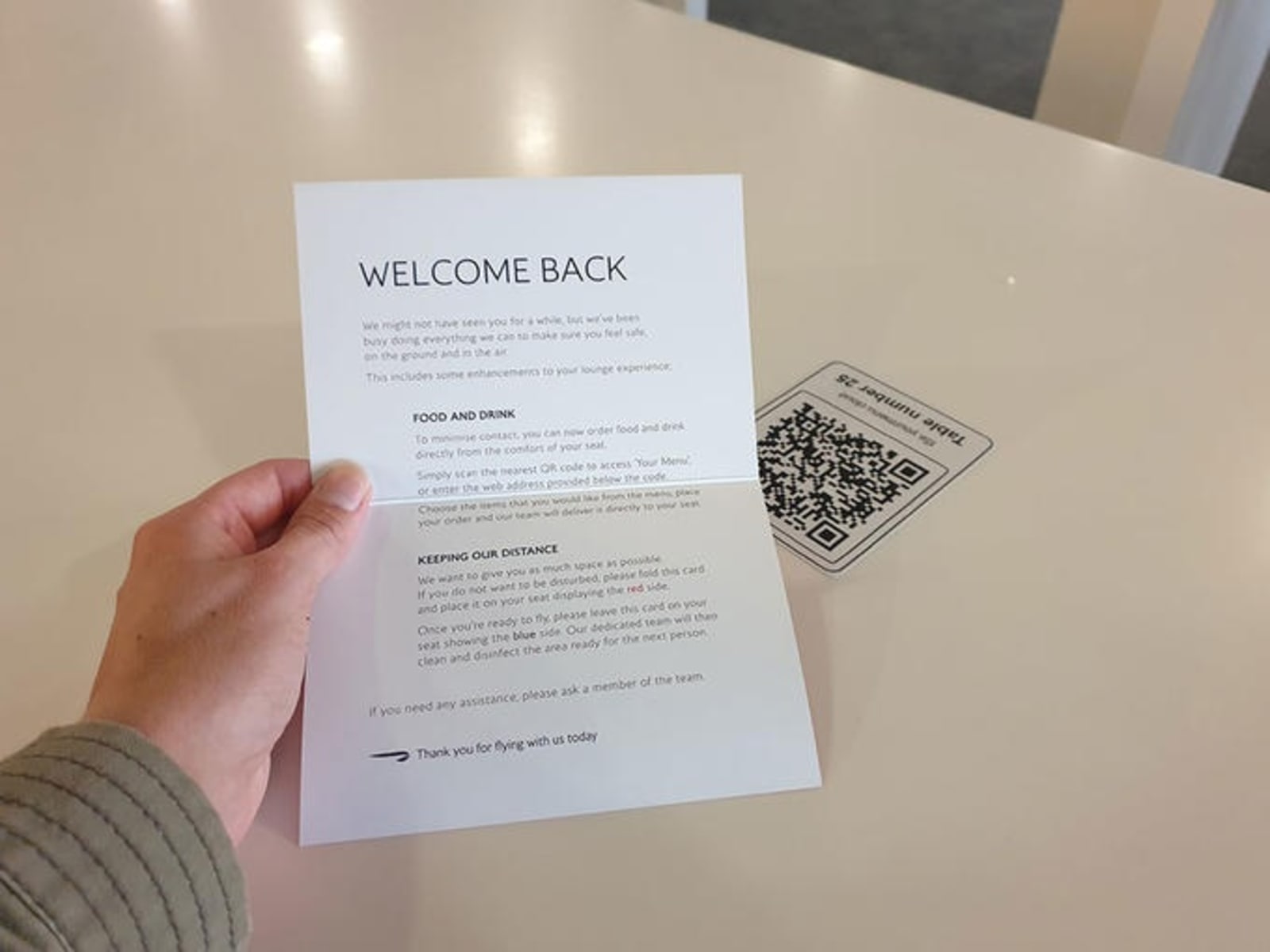


QR reader for BA's lounge menu - (image: Alex Cronin)
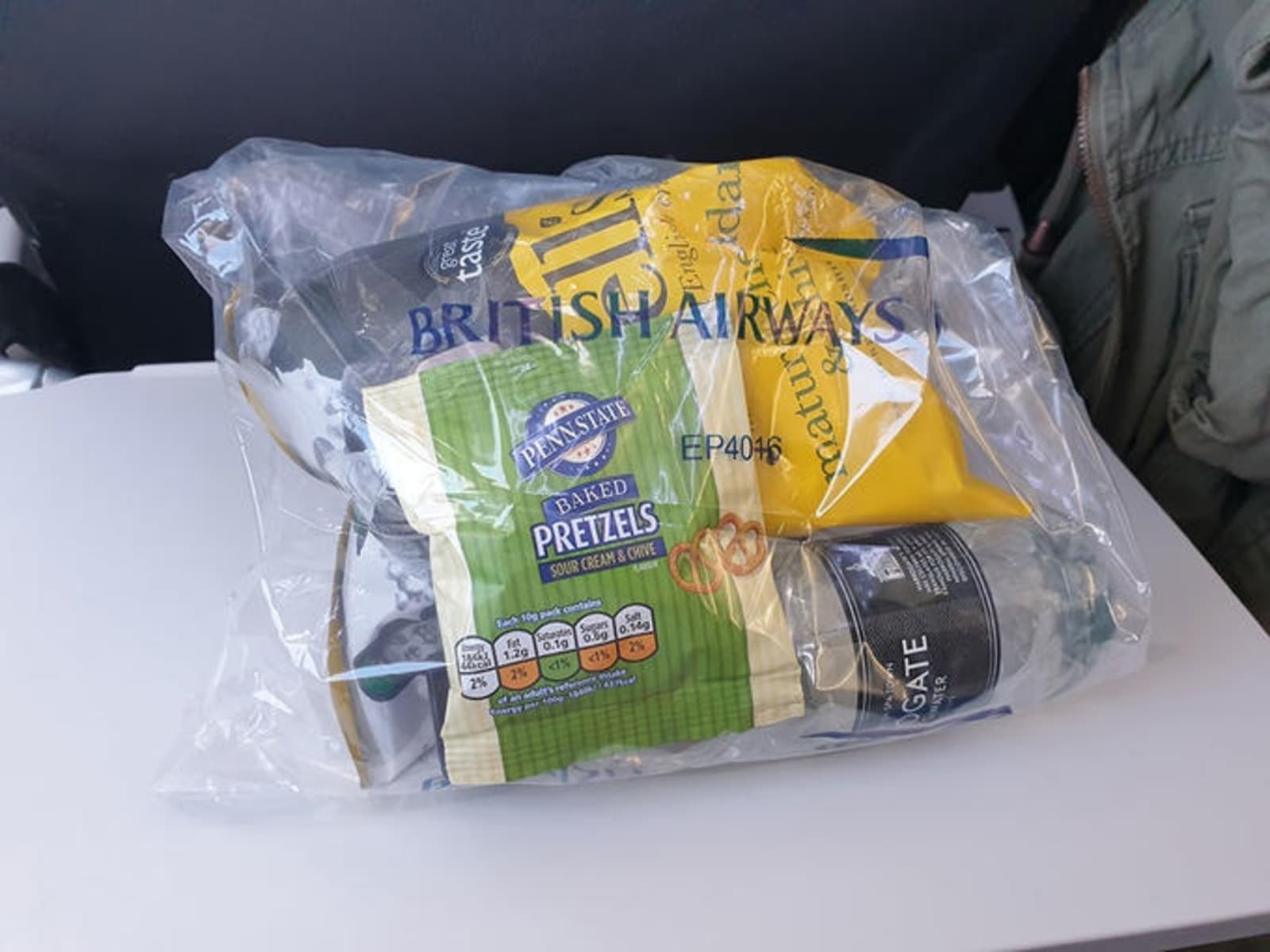


Prepackaged snacks onboard - (image: Alex Cronin)
The onboard experience
As mentioned, British Airways’ planes are cleaned and sanitised between every flight. To prevent having any extra surfaces for contamination, all magazines, literature and menus have been temporarily removed. This also meant that there was no food-to-order available. Instead, everyone was offered a pre-packaged snack and drink, and the crew were also actively encouraging passengers to consume their own food and drink if they’d brought it with them. Be sure to factor in time to pick up a snack in the airport if you think you’re going to get hungry onboard.
Much like in the terminal, masks are mandatory onboard – for passengers and crew – unless you’re eating of course. Where possible, travellers were encouraged to stay in their seats and, to avoid any queuing in the galley, crew were asking that we only get up to use the bathroom when it’s visibly clear.
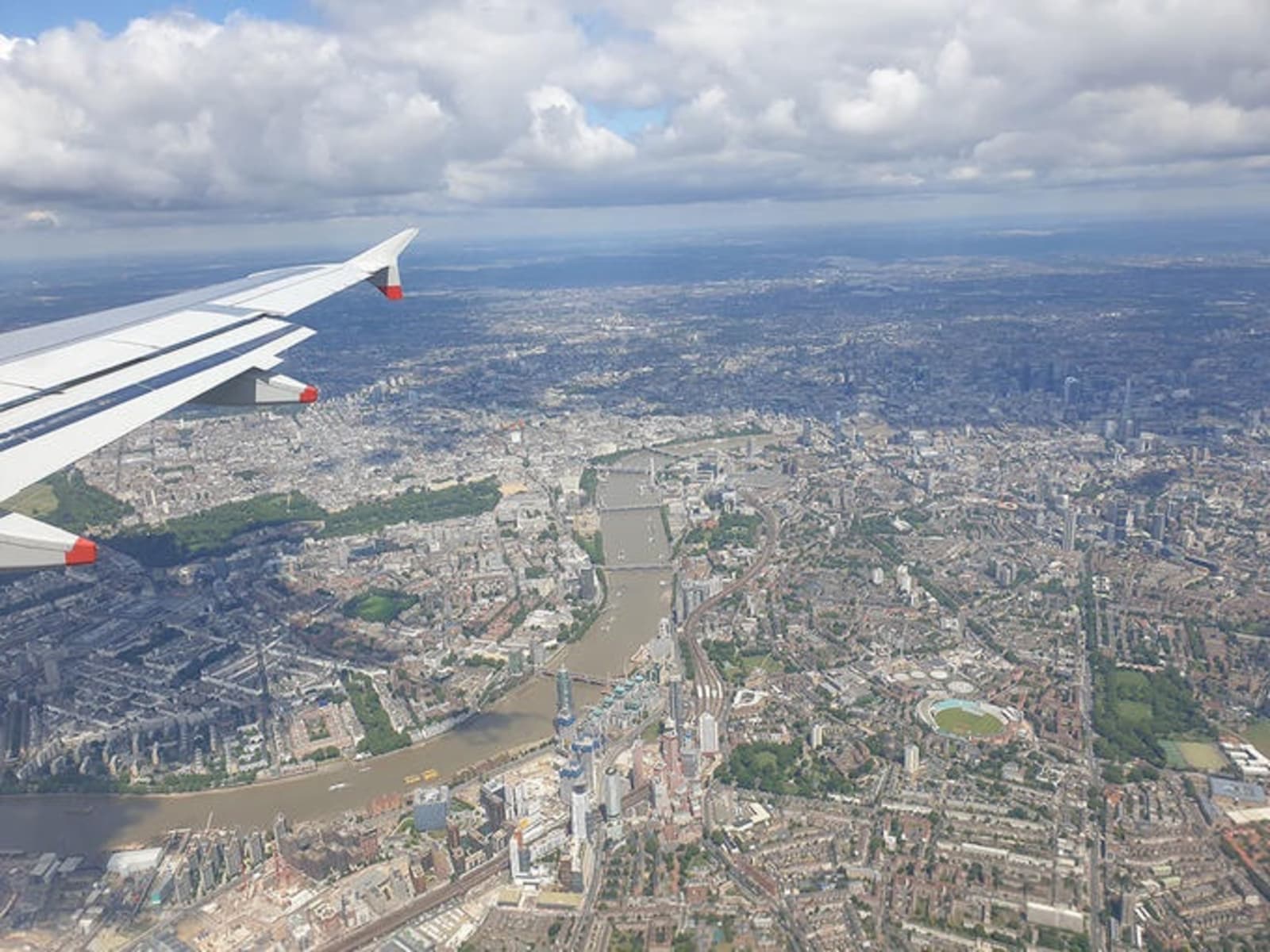


London from the air - (image: Alex Cronin)
Disembarking
One of the things I hate most about flying is the rush to get out of the plane. As soon as that fasten seatbelt light dings off, pretty much everyone jumps up in a mad panic to grab their baggage from the bins. Arguments ensue and, inevitably, someone gets whacked in the face by a bag strap. But no more. In order to keep people as distanced as possible, disembarkation on all BA flights is now done by row number.
As such, I waited until the people in front had cleared and my row had been called before getting up to leave. It was glorious. Vaccine or no, I really hope this is something that all airlines do in future.
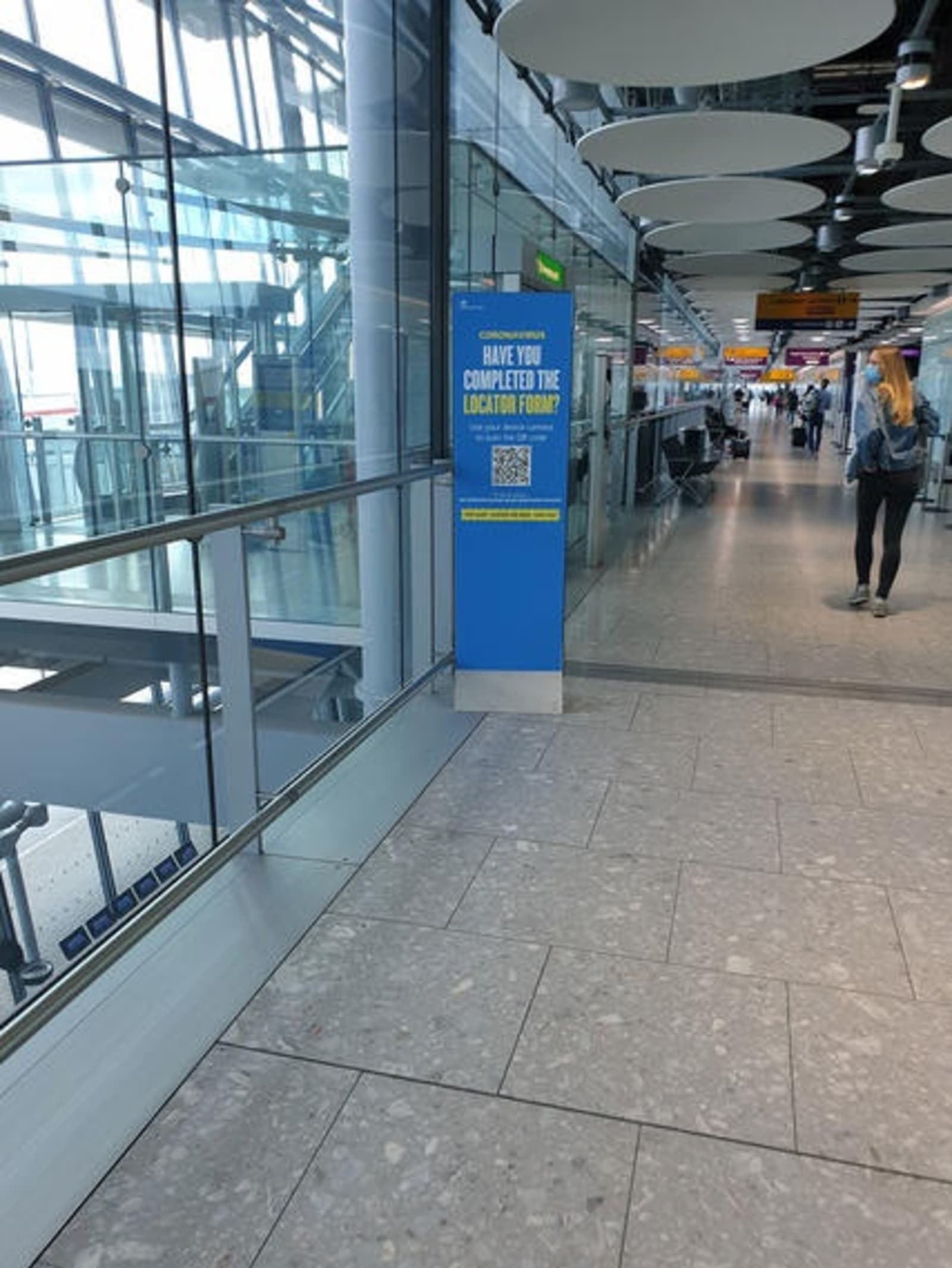


UK Locator Form sign at Heathrow - (image: Alex Cronin)
Other things to be aware of
While travelling isn’t completely dissimilar to how it was before the global pandemic, there are a few new things to bear in mind before you fly. First off is the mask situation. You have to wear them pretty much anywhere that’s enclosed – not just in the airport and on the plane, but often in hotel lobbies, restaurants in-destination and transfers. As such, be sure to pack PLENTY. Most masks only last four hours, so you should change them regularly. Be sure to add extra masks, sanitising wipes and antibacterial gel to your packing list from now on.
Perhaps the most important thing to be aware of is the new forms that have been introduced. Some places require you to have completed a coronavirus form in advance of travel, detailing where you’ve been and your travel plans – chat to your Consultant about whether your destination requires this. You will also need to fill out a UK locator form before arriving home in the UK. This can be completed easily on a mobile device and downloaded as a PDF to your phone, or on a computer and printed out. I would recommend the former from an environmental and cleanliness perspective. Once you’ve got all this sorted, then you’re good to go.
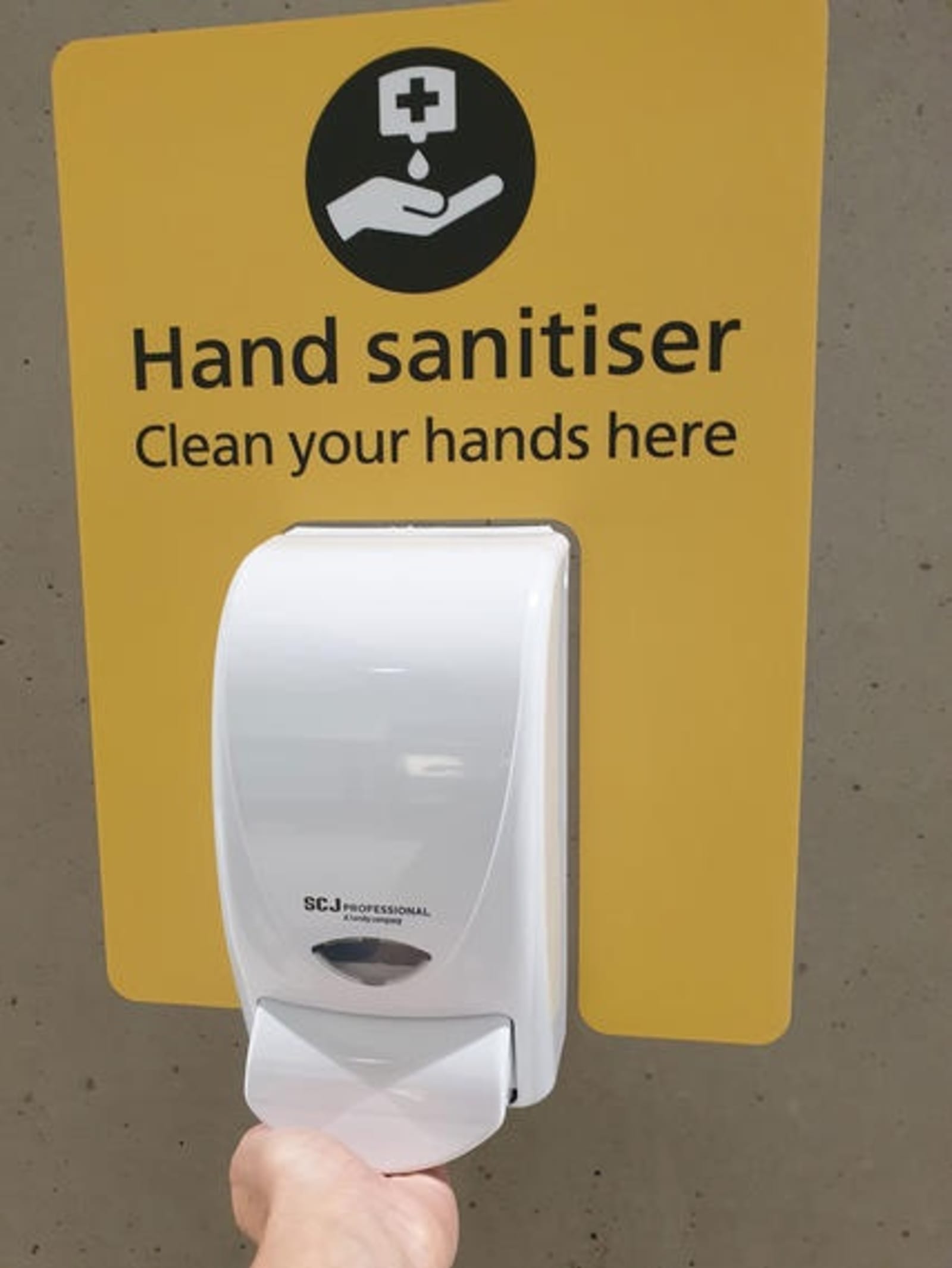


Hand sanitiser at Heathrow - (image: Alex Cronin)
Overall, for me, the most reassuring thing about travelling during a pandemic was seeing everyone – from the British Airways airport staff to the airline’s cabin crew – doing all they possibly could to make air travel as safe and hygienic as possible. Even passengers seemed more considerate than usual, making for an overall enjoyable flying experience during coronavirus. Perhaps, dare I say it, more than before. But who can even remember that now anyway?
Best of all, I got to experience a lovely European city at the other end.
So, where to next…? Check out our Where’s Safe to Travel hub for more inspiration.
Stop Looking, Start Booking
- SAVE UP TO £329*
Be Engulfed in the Heart of Mauritius at the 4-star Zilwa Attitude
7 nights
Mauritius
Stay from
£960*
per person
2 adults
£1,919*totalFly + stay from
£1,828*
per person
2 adults
£3,655*total - WATERPARK ACCESS
Arabian Nights at the 5-star Jumeirah Beach Hotel Dubai
4 nights
Dubai
Stay from
£755*
per person
2 adults
£1,509*totalFly + stay from
£1,388*
per person
2 adults
£2,775*total - EAST COAST BREAK
Adults Only East Coast Break at the 4-star Solana Beach Mauritius
7 nights
Mauritius
Stay from
£630*
per person
2 adults
£1,259*totalFly + stay from
£1,485*
per person
2 adults
£2,969*total - SAVE UP TO £309*
Adults Only Serenity at the 4-star Sunrise Attitude
7 nights
Mauritius
Stay from
£963*
per person
2 adults
£1,925*totalFly + stay from
£1,808*
per person
2 adults
£3,615*total - SAVE UP TO £355*
Island Escape at the 5-star InterContinental Resort Mauritius
7 nights
Mauritius
Stay from
£945*
per person
2 adults
£1,889*totalFly + stay from
£1,778*
per person
2 adults
£3,555*total - INCLUDES AQUAVENTURE ENTRY
Discover a World of Amazement at the Fantastic 5-star Atlantis The Palm Dubai
4 nights
Dubai
Stay from
£880*
per person
2 adults
£1,759*totalFly + stay from
£1,500*
per person
2 adults
£2,999*total - Save up to £500*
4-star Te Moana Resort Tahiti with Sunset Cruise
7 nights
Papeete
Stay from
£1,080*
per person
2 adults
£2,159*totalFly + stay from
£2,400*
per person
2 adults
£4,799*total - £895* BONUS VALUE
Maldives Adventure Awaits at the 4-star Sun Siyam Olhuveli
7 nights
Maldives
Stay from
£1,143*
per person
2 adults
£2,285*totalFly + stay from
£1,873*
per person
2 adults
£3,745*total - KIDS STAY FREE^
Barcelona Family City Break
3 nights
Barcelona
Stay from
£204*
per person
2 adults, 2 children
£815*totalFly + stay from
£317*
per person
2 adults, 2 children
£1,265*total - SAVE UP TO £675*
Holiday in the Tropics at the 4-star Adaaran Select Hudhuran Fushi with all-inclusive package
7 nights
Maldives
Stay from
£1,108*
per person
2 adults
£2,215*totalFly + stay from
£1,855*
per person
2 adults
£3,709*total
Related articles

Be in to win a £250 travel gift card*
Sign up for our hottest deals, travel inspo & more!
Help & support
© Flight Centre (UK) Limited, Registered in England No. 02937210.
* 0800 calls are free for landlines and mobiles. 0333 calls are included within inclusive minutes package on mobiles, otherwise standard rates apply. 0844/0845 calls are 7p/pm plus your local carrier charge. Prices are per person twin share, correct as at the date of publication, subject to change and may be higher/unavailable for certain dates. Airfares are economy on specified airlines from London, unless otherwise stated. For full booking conditions visit Booking Conditions. Some of the flights and flight-inclusive holidays on this website are financially protected by the ATOL scheme. But ATOL protection does not apply to all holiday and travel services listed on this website. We will provide you with information on the protection that applies in the case of each holiday and travel service offered before you make your booking. If you do not receive an ATOL Certificate then the booking will not be ATOL protected. If you do receive an ATOL Certificate but not all the parts of your trip are listed on it, those parts not listed will not be ATOL protected. Please see our booking conditions for information, or for more information about financial protection and the ATOL Certificate go to: www.caa.co.uk.

